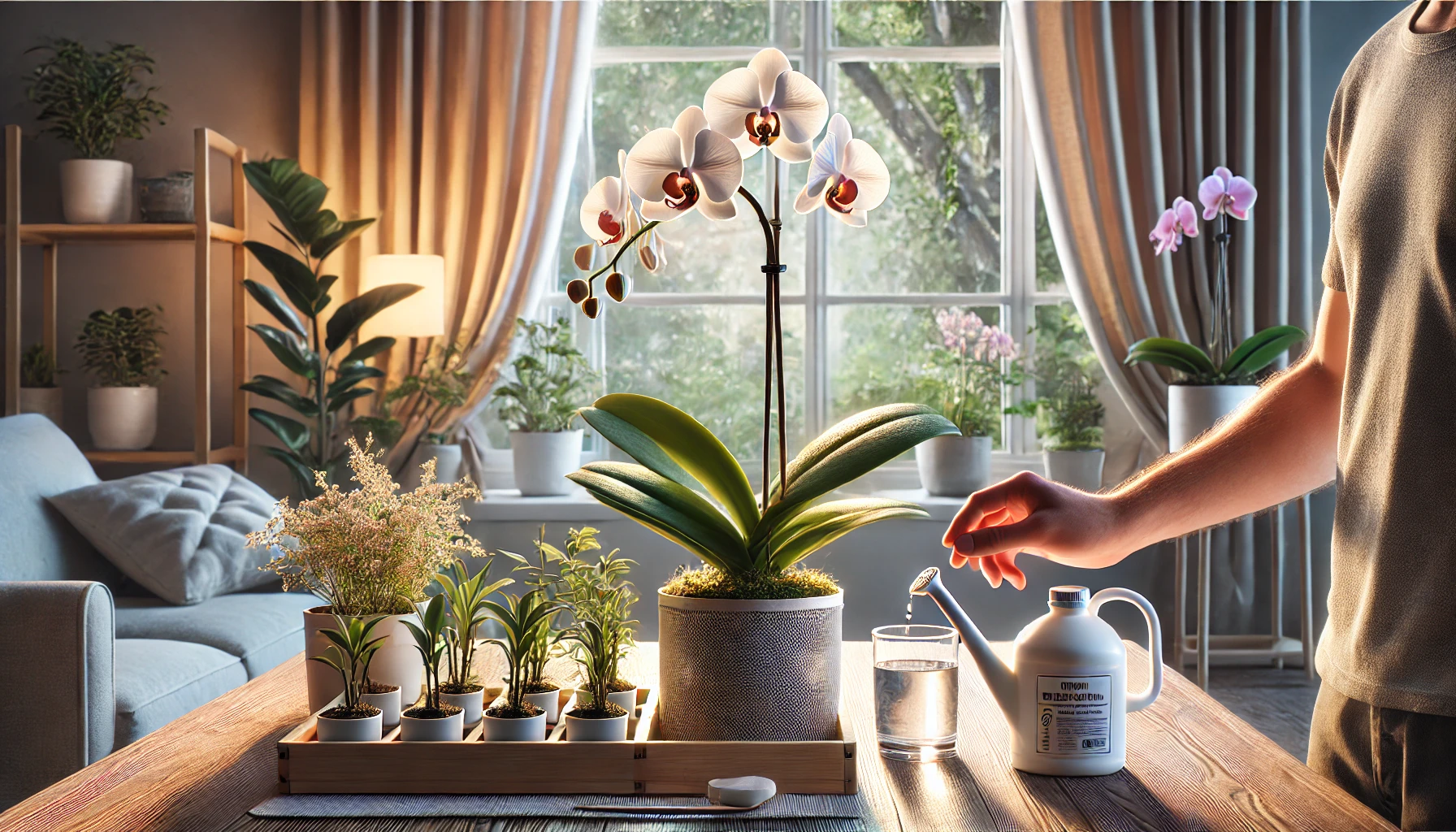Orchids have a reputation for being delicate and difficult to care for, but with the right routine, they can be surprisingly easy to maintain. Whether you’re a beginner or looking to improve your orchid care skills, establishing a simple and effective routine will help your plant thrive. By balancing light, water, humidity, feeding, and repotting, you can ensure your orchid stays healthy and blooms year after year.
🌱 Understanding Your Orchid’s Basic Needs
Before creating a care routine, it’s essential to know the key factors that influence an orchid’s health. Most orchids need bright, indirect light—not direct sun. Orchids need water, but overwatering can cause root rot. They thrive in 50–70% humidity, depending on the species. Most orchids prefer 65–75°F (18–24°C) during the day and slightly cooler nights. Orchids require a well-draining medium like bark, moss, or a combination of both.
💡 Understanding these basics will make orchid care much easier!
🌞 Providing the Right Light
Light is one of the most important factors in orchid care. Without enough light, your orchid may grow leaves but won’t bloom. The best placement for orchids indoors is near an east or north-facing window, which provides gentle, indirect sunlight. South-facing windows can work if sheer curtains are used to filter the light. If natural light is limited, artificial grow lights can be used for at least 10–12 hours a day.
💡 How to tell if your orchid is getting enough light: Leaves that are a light to medium green indicate healthy light exposure. Dark green leaves suggest too little light, which can prevent blooming. Yellow or reddish leaves may indicate too much light exposure, possibly causing sunburn.
💧 Watering the Right Way
Overwatering is the number one reason why orchids die. The key is to water only when needed, not on a fixed schedule. Water when the roots turn silvery-white, but avoid watering if roots are still green and moist. Most orchids need water once a week, but this depends on humidity and potting mix.
💡 How to water correctly: Use room-temperature water, as cold water can shock the roots. Water in the morning to allow excess moisture to evaporate by evening. Always let water drain completely—never let orchids sit in standing water. If unsure, stick a wooden skewer in the pot; if it comes out damp, wait before watering again.
🌿 Maintaining Proper Humidity
Orchids absorb moisture from the air, so humidity is crucial for their health. Most orchids thrive in 50–70% humidity, but some species prefer even higher levels. To maintain humidity, place orchids on a humidity tray filled with water and pebbles, mist the air around the orchid (but not directly on leaves or flowers), or use a small room humidifier.
💡 Avoid placing orchids near heaters or AC vents, as these dry out the air quickly.
🌡 Keeping the Right Temperature
Orchids prefer warm days and cooler nights. This temperature drop triggers blooming in many species. The ideal orchid temperature range is 65–75°F (18–24°C) during the day and 55–65°F (13–18°C) at night.
💡 Place your orchid near a window at night to naturally experience a slight temperature drop, encouraging blooming.
🌸 Fertilizing for Strong Growth and Blooms
Orchids need nutrients to grow strong leaves, roots, and flowers. However, overfertilizing can damage them. Use a balanced orchid fertilizer (20-20-20) at half strength every two weeks during active growth. When flower spikes appear, switch to a bloom booster (10-30-20) fertilizer. Skip fertilizing in winter when growth slows down.
💡 Always fertilize after watering—never on dry roots, as this can cause burns.
🏺 Repotting for Healthy Roots
Orchids should be repotted every 1–2 years or when the potting mix breaks down. A fresh potting mix improves drainage and prevents root rot. Signs your orchid needs repotting include potting mix that looks decomposed or soggy, roots growing out of the pot, or water not draining properly.
💡 How to repot an orchid: Gently remove the orchid from its pot and shake off old potting mix. Trim any black, mushy, or dead roots. Choose a new pot with drainage holes, slightly larger than the current one. Use fresh bark or moss mix for healthy root growth. Wait a few days before watering to allow the plant to adjust.
🚫 Common Mistakes Beginners Should Avoid
Overwatering is the most common mistake, leading to root rot. Using regular potting soil instead of a well-draining orchid mix can suffocate roots. Keeping orchids in low light prevents blooming. Ignoring humidity needs can cause dehydration, leading to wrinkled leaves. Repotting too often or in the wrong season can stress the plant.
🛡 Final Tips for a Successful Orchid Care Routine
Observe your orchid regularly—changes in leaves, roots, or flowers can indicate if adjustments are needed. Keep a simple routine: water when needed, provide adequate light, and fertilize lightly. Be patient—orchids take time to adapt and rebloom.
By following these guidelines, even beginners can enjoy the beauty of orchids with confidence. With the right care, your orchid will reward you with vibrant, long-lasting blooms! 🌸✨
